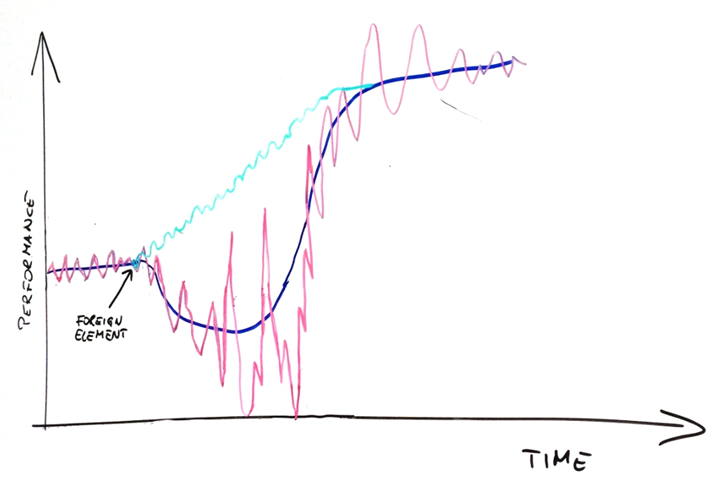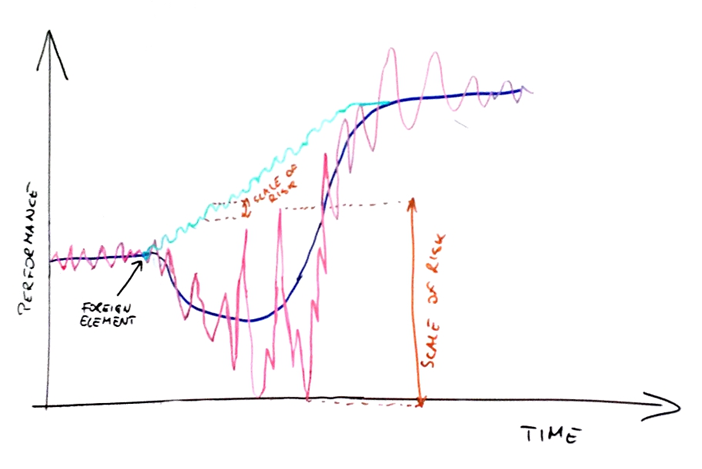How does transparency feel? Early in my career, I had an occasion to experience that. I was working in a typical organization where lots of things, payroll included, were secrets. Then the salary list leaked out. It wasn’t a huge leak, i.e. it didn’t go public, but I was close enough to the source that I could take a look.
When I was about to open the spreadsheet with the data, I was thinking about my expectations. I hoped that information about salaries would help me to make sense of how people in the company are perceived by the leaders. I thought that it might provide me with role models to look up to. I was ultimately looking forward to transforming new knowledge into some inspiration and motivation for myself.
That was totally not what happened.
What I saw on the payroll was a lot of unfairness. I saw numbers I couldn’t possibly justify. I couldn’t make sense of the system that produced these numbers. Most of all, I was painfully aware that there was literally nothing I could do to change that. After all, I shouldn’t have seen the data in the first place.
Ultimately, I got frustrated.
Transparency without Autonomy
With the benefit of hindsight, I see a broader picture of that experience. On one hand, I am aware that back then I couldn’t have had the whole perspective on what was valued in the organization and thus my sense of unfairness might have been exaggerated. I didn’t have insight on systems thinking to be able to rationalize the shape of the payroll as a pragmatically predictable outcome. Should I understand that my outrage and my frustration wouldn’t be that big.
The bottom line remains the same. I should have been expecting frustration as the only logical outcome of such an experiment. I put myself in a situation when I was about to get access to data that was important to me on an emotional level and yet I knew I had no influence whatsoever on shaping the future state of that data.
I got transparency with no autonomy to act. Heck, I couldn’t even ask all my “whys” to better understand what was going on. I put myself in a position where my frustration was guaranteed.
Transparency without autonomy is a recipe for frustration.
It’s like telling people stuff that they don’t like, or agree with, and then telling them to live with it. You don’t like who gets a raise? Live with it. You don’t agree with who gets promoted? Live with it. You don’t agree with disparities on the payroll? Live with it. You get the idea.
A side note: I refer to autonomy and not authority. There’s a significant difference between the two. For the sake of this discussion, the crucial part is autonomy defined as the actual use of decision-making power, not just the availability of decision-making power.
Autonomy without Transparency
What about the opposite situation? Can we let people act while keeping them from accessing sensitive data? The answer to this case is rather obvious, I think. Acting in an organizational context means making decisions. Can we then make decisions with limited access to relevant information?
Yes, we can. The question is: would that be good decision-making? Even though a common perception that more information available to a decision maker would result in a better decision is a myth, it is still crucial to have access to a few most important bits of data.
In our context most important often translates to most sensitive and thus available to few. If we let people decide without making such information accessible we’d set them up to fail. Their decisions simply won’t be informed and thus random and low quality.
Decentralizing control requires decentralizing both the authority to make decisions and the information required to make these decisions correctly.
To stick with the original example, just try to imagine people deciding on raises without knowing what salaries are.
Transparency and Autonomy
OK, so neither autonomy nor transparency alone does make sense. What does, then? If we aim to improve either one we need to think about both at the same time.
Each time we loosen transparency constraints we should answer: how can people act on newly accessible data? What will they be able to do if they aren’t satisfied with what they see? The answer doesn’t have to be full control over changing the part of reality that we’ve just made transparent. They do need to have influence, though.
When we were making salaries transparent at Lunar Logic we didn’t give people the power to set the salaries. Well, not initially. We gave them as much as, and as little as, influence: an option to start a discussion about a salary and space to share their opinions about any raise under discussion. Even if the final decisions were still being made by the same person as before the change there were clear options anyone could exploit if they were dissatisfied with any number on the payroll.
While eventually influence has transformed into full control over decisions, the key move was the initial one. The one that gave people influence.
The guidance is much more straightforward if we start with the intention of extending autonomy. We simply need to answer what information we consider when making this kind of decision and then make that information available.
Most often the hard part is realizing what range of information we really consider. When we started experimenting with the decision-making process at Lunar Logic, the first step was to let people spend company money without asking permission. The part of the process was, and still is, what we call the advisory process.
As a part of advisory processes, I was often consulted about planned expenses. The most important lesson for me from the advisory processes was how unaware I was of all the data, experience and mental models I was using when I was making decisions myself. This, in turn, made me realize how much more transparent with all these we need to become to get autonomy working. A simple example: if we want people to spend company money wisely they should know what’s the financial health of the company and how specific expenses may affect it, i.e. regular financial reports should be available to everyone.
Moving the Bar
The bottom line is this: when we raise the bar of transparency we need to raise the bar of autonomy as well. And vice versa.
It is not as obvious as it sounds. Each change fuels and influences another. It is more of a balancing act than a prescribed set of moves one could repeat in every situation.
There is a caveat too. Transparency is a one-way street. You simply can’t undo making salaries transparent. You can’t make people unsee the payroll. Then again, transparency doesn’t go alone. It must be followed by autonomy. This means that changes on both accounts are almost impossible to reverse.
In fact, rolling autonomy back is a bad idea not only because it is connected to transparency. Even if we looked at autonomy in isolation there’s a painful penalty to pay for removing autonomy that has already been granted. It is an equivalent of saying “we weren’t serious in the first place about giving you that power”. Not only we are back to the square one but also people would be discouraged to embrace autonomy in the future because they got burned.
The obvious advice in this context would be to tread carefully and to take one’s time. We will find ourselves in a place where we feel like we took a step to far. What we can do is to take a break until we learn how to embrace the new situation.
At Lunar Logic it happened sometime after we made salaries transparent and gave people influence over raise decisions. Suddenly we found ourselves in the middle of what we now call the raise spree–a lot of raises were happening simultaneously with little consideration of their ripple effects. Instead of removing autonomy or double guessing individual decisions, which would end up the same, we focused on educating ourselves. How individual raises would influence other decisions about salaries and the overall financial condition of the company. Only as soon as we felt comfortable with the autonomy we had we moved the needle again.
Neither or Both?
If we stick to the assumption that increasing autonomy and transparency should go together, the question we should ask is: should we even bother? If it’s the choice between both and none, why not to choose none and stick with the status quo?
The younger version of me would say that more transparency is always better than less. Well, now I would argue with my younger self. There are edge cases, like the one that I started with. However, in general, I believe that it is easier to lead a company when more information is available to everyone. At least in a part, it comes from a fact that not only is it more transparency, but also more autonomy. The latter releases a part of the burden of people in leadership roles.
I do have a better answer when it comes to autonomy. Dan Pink points autonomy as one of the crucial factors that our motivation depends on. Little autonomy, little motivation, he says. Given how discouraged autonomy is the modern workplace we can only do good if we pursue it more. It won’t happen unless we care about autonomy and transparency together.
For me the answer is obvious. It’s both; not neither. As difficult as the evolution can be, it’s worth it.




















